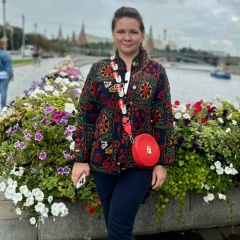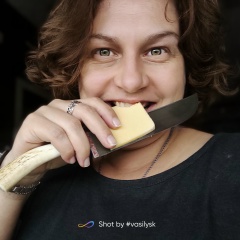Разговоры — они разные бывают. Бывают как в игра в домино: шлеп — вопрос, шлеп — ответ. Шлеп-шлеп. Рыба. Или кто-то выиграл. Смешали доминошки — и новую партию начали колотить. В смысле новую тему. Доминошный разговор — это называется.
А бывает разговор как перетягивание каната — каждый на себя тянет, причем одновременно тянут. То есть, говорят. И так до бесконечности, ну или пока канат не треснет. В смысле, ссорой пока не кончится. Или пока кто-то на себя все не перетянет, тоже типа выиграл. Это называется канатный разговор.
Бывает еще пластилиновый разговор. Это когда собеседники взяли по куску пластилина, и каждый лепит свое — неспешно, не агрессивно, но только свое. И не глядит чего лепит собеседник, своим делом занят. Или нет, не пластилин, лучше на другом примере объяснить — на пляже из песка что-нибудь свое строить, лежа друг к другу спинами. Никто тут не выигрывает, но я не люблю таких разговоров, пустые они. Налепил, настроил замков сам себе — а пользы никакой, потому что закончился разговор — и все что налепили-настроили можно обратно развалить и смешать, потому что не нужно это никому, с собой ничего не унесешь.
А бывает разговор елочный, как Новогодняя елка. Это когда не спеша, со вкусом, не мешая другому, наряжаешь одну на двоих елку. Берешь из коробки стекляшку какая понравится, выворачиваешь из газет старых, полюбуешься как блестит штучка — и прикидываешь, куда повесить лучше? И так по очереди и одновременно, дополняя друг друга, наряжают дерево. И самим приятно, и блестит, и красиво, и праздник в итоге получается. Вот такой у нас с Аришей был разговор — елочный. Это, кстати, Аришкина классификация разговоров, это она сказала что у нас разговор елочный.
Отсюда:
http://lleo.me/arhive/harizma/harizma.shtml
А бывает разговор как перетягивание каната — каждый на себя тянет, причем одновременно тянут. То есть, говорят. И так до бесконечности, ну или пока канат не треснет. В смысле, ссорой пока не кончится. Или пока кто-то на себя все не перетянет, тоже типа выиграл. Это называется канатный разговор.
Бывает еще пластилиновый разговор. Это когда собеседники взяли по куску пластилина, и каждый лепит свое — неспешно, не агрессивно, но только свое. И не глядит чего лепит собеседник, своим делом занят. Или нет, не пластилин, лучше на другом примере объяснить — на пляже из песка что-нибудь свое строить, лежа друг к другу спинами. Никто тут не выигрывает, но я не люблю таких разговоров, пустые они. Налепил, настроил замков сам себе — а пользы никакой, потому что закончился разговор — и все что налепили-настроили можно обратно развалить и смешать, потому что не нужно это никому, с собой ничего не унесешь.
А бывает разговор елочный, как Новогодняя елка. Это когда не спеша, со вкусом, не мешая другому, наряжаешь одну на двоих елку. Берешь из коробки стекляшку какая понравится, выворачиваешь из газет старых, полюбуешься как блестит штучка — и прикидываешь, куда повесить лучше? И так по очереди и одновременно, дополняя друг друга, наряжают дерево. И самим приятно, и блестит, и красиво, и праздник в итоге получается. Вот такой у нас с Аришей был разговор — елочный. Это, кстати, Аришкина классификация разговоров, это она сказала что у нас разговор елочный.
Отсюда:
http://lleo.me/arhive/harizma/harizma.shtml
Conversations - they are different. It happens like in a game of dominoes: a slap is a question, a slap is an answer. Slap Slap. Fish. Or someone won. Dominoes mixed up and a new batch started to pound. In the sense of a new topic. Domino talk is called.
And there is a conversation like a tug of war - everyone pulls on himself, and at the same time pull. That is, they say. And so on ad infinitum, well, or until the rope breaks. I mean, the quarrel is not over yet. Or until someone pulls everything over, he won too. This is called a rope conversation.
There is still a plasticine conversation. This is when the interlocutors took a piece of plasticine, and each sculpts his own - slowly, not aggressively, but only his own. And he does not look at what the interlocutor sculpts, he is busy with his own business. Or not, not plasticine, it’s better to explain using another example - to build something on the beach from the sand, with your backs to each other. Nobody wins here, but I do not like such conversations, they are empty. I stuck it up, set up the locks for myself - but no good, because the conversation ended - and everything that is stuck-set up can be ruined and mixed back, because nobody needs it, you won’t take anything with you.
And sometimes a Christmas conversation, like a Christmas tree. This is when slowly, tastefully, without interfering with the other, you dress one tree for two. You take a piece of glass from a box that you like, turn it out of old newspapers, admire how the little thing glistens - and you wonder where to hang it better? And so, in turn and at the same time, complementing each other, decorate the tree. And it’s nice, and glitters, and beautiful, and the holiday as a result turns out. Here we had a conversation with Arisha - Christmas-tree. Incidentally, this is Arishkina’s classification of conversations, she said that we have a Christmas conversation.
From here:
http://lleo.me/arhive/harizma/harizma.shtml
And there is a conversation like a tug of war - everyone pulls on himself, and at the same time pull. That is, they say. And so on ad infinitum, well, or until the rope breaks. I mean, the quarrel is not over yet. Or until someone pulls everything over, he won too. This is called a rope conversation.
There is still a plasticine conversation. This is when the interlocutors took a piece of plasticine, and each sculpts his own - slowly, not aggressively, but only his own. And he does not look at what the interlocutor sculpts, he is busy with his own business. Or not, not plasticine, it’s better to explain using another example - to build something on the beach from the sand, with your backs to each other. Nobody wins here, but I do not like such conversations, they are empty. I stuck it up, set up the locks for myself - but no good, because the conversation ended - and everything that is stuck-set up can be ruined and mixed back, because nobody needs it, you won’t take anything with you.
And sometimes a Christmas conversation, like a Christmas tree. This is when slowly, tastefully, without interfering with the other, you dress one tree for two. You take a piece of glass from a box that you like, turn it out of old newspapers, admire how the little thing glistens - and you wonder where to hang it better? And so, in turn and at the same time, complementing each other, decorate the tree. And it’s nice, and glitters, and beautiful, and the holiday as a result turns out. Here we had a conversation with Arisha - Christmas-tree. Incidentally, this is Arishkina’s classification of conversations, she said that we have a Christmas conversation.
From here:
http://lleo.me/arhive/harizma/harizma.shtml
У записи 12 лайков,
6 репостов.
6 репостов.
Эту запись оставил(а) на своей стене Элина Арсеньева































